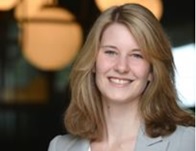
The landslide that washes away your school. The storm that kills your classmates. The drought that makes you starve for the next week, and most likely also for the months to come. We know: These are real scenarios affecting real people around the globe and in their daily lives, millions annually.
When it comes to disasters, children and youth are among the most vulnerable affected groups. Natural hazards endanger their personal development perspectives critically. They are in danger when the hazard occurs, intensively affected in its direct aftermath, and even more, in the long-term as the disaster strikes at a critical stage of human development. The young are extremely vulnerable to disasters, but they are also key for reducing disaster risk!
Disaster risk reduction is meant to build a less risky, hence a safer tomorrow – for current generations and the future ones. One of the key principles that guides us in reducing disaster risk is intergenerational equity. That is why disaster risk reduction needs to target all – and actively address and include all groups into action. Thus, we shall not forget about the massive potential of the young!
By educating young generations about disaster risk and preparedness, they serve as advocates for resilience. Young people internalize this knowledge. They can spread it and add their own, personal experiences, especially when growing up in a disaster-prone environment. By considering young men and women, even children, in disaster risk reduction, a new generation of resilience leaders rises. That is why the new Post-2015 DRR framework, future DRR programs and initiatives need to target the youth with special emphasis. They are the ones who grow up in fragile environments that are frequently exposed to natural hazards and other disasters. If they grow up with a consciousness of resilience, they are able to reduce disaster risk and achieve sustainable development in their livelihoods. Hand in hand with parents and grandparents. Such an approach to disaster risk reduction, of dialogue between generations, empowers the youth and fosters at the same time social cohesion. The latter is indispensable for disaster-prone environments, where the cohesion of communities is at test frequently.
What does it need to achieve these goals? Education, training and capacity building are of utmost importance. In schools, but also within their communities and addressed through local, regional and/or national authorities, children can learn about the impacts, familiarize already with underlying risk factors and develop a consciousness of how to cope with frequent and intense natural hazards. In addition, this induces the mentality of “building back better” and opens room for new creative and dynamic solutions DRR professionals and the “wise old men in the village” might not even have dreamed of.
Young people have shown that they are drivers for change: for instance, in youth councils where they engage in discussions and influence the discourse about DRR and disaster management plans; in scout groups where they do their own capacity development by working on disaster preparedness themselves. Various international organizations, therefore, call for involving children in disaster planning (for example UNICEF, the Red Cross, Plan or Caritas, among many others).
The new framework coming out of the Third UN World Conference on Disaster Risk Reduction will strive to encompass all relevant stakeholders. It shall be both an inclusive and sustainable framework. So, when writing this document, please consider and listen to young people – and involve them in DRR. Target them; talk to, and with them. Empower them and invest in their capacities. Let them and the international community see a real commitment! Young people are and build the future; they are our basis for sustainability. Think about their needs, and consider what they can and that that they are willing to contribute significantly to reduce disaster risk and make their communities more resilient.
Julia Harrer is a young professional in disaster risk reduction, currently working as consultant for a Rome-based specialized agency of the United Nations. She is a Mercator Fellow on International Affairs and studied European and International Politics and Economics at the Martin-Luther-University Halle-Wittenberg, Germany, and the Catholic University of the Holy Heart in Milan, Italy. You can reach Julia at julia.harrer@mercator-fellows.org.